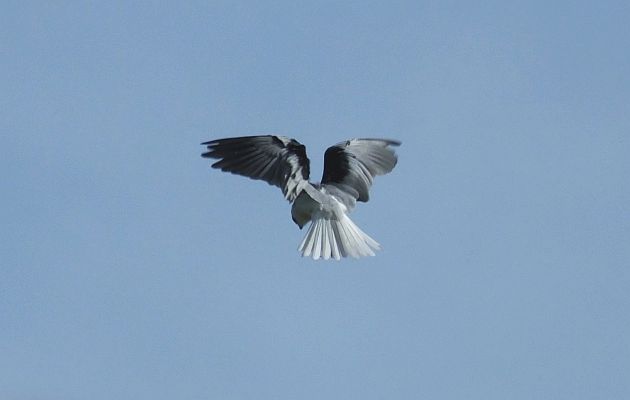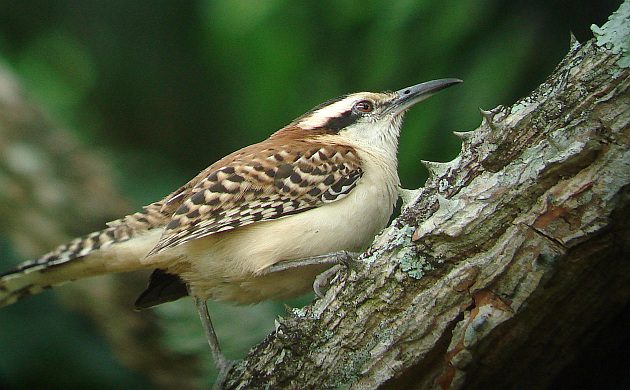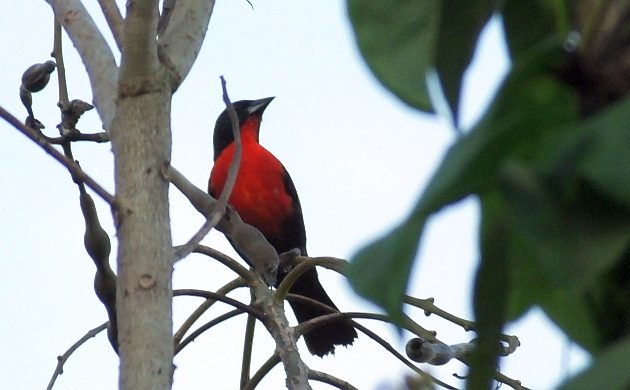
White-tailed Kite in action- a classic airport species in Costa Rica.
Odd habitats attract odd birds. Or rather, I should say that out of place habitats attract lost birds. The good old sewage ponds bring in waders and wandering waterbirds that have nowhere else to go. Turf farms in wooded regions are wide open oases for grasspipers and other species adapted to natural lawns. The same can be said of wooded parks in urban areas and other bits of precious habitat surrounded by areas less hospitable to various types of the avian kind.
Although Costa Rica is noted for tropical forests and their subsequent wealth of birds and biodiversity, us local birders also have our own, out of the way habitat hotspots. One of the most frequently visited is a place created for fake birds of the large metal flying kind. Such machines require an extensive, flat, open and flat place where their can safely land and take off. It doesn’t matter if that same spot used to be forest or if it is surrounded by woods or wetlands or housing; an airport can’t function if it doesn’t share characteristics with tundra or open steppe.
Since the Juan Santamaria Airport in Costa Rica’s Central Valley is located in an area that lacks similar open habitats, its grassy fields and adjacent puddles bring in birds that would have flown right over while also attracting other non-forest resident species in search of a home. These are some of the birds we look for and some of what we find.
Birds that Would Have Flown Over and Kept on Going
Upland Sandpiper, Baird’s Sandpiper, and Buff-breasted Sandpiper are the avian stars us local birders look for. These are the three main species that urge us to scan a grassy field with puddles in September and October. The fact that all three are seen most years tells us that they do fly over the city, most probably unseen and mostly unheard. This year, at least four Uplands were doing their grass walking thing and a few Baird’s were also seen. Sadly, we collectively dipped on Buff-breasteds; there were few if any records in other parts of Costa Rica this past fall migration. At least consolation came in the form of an American Golden-Plover that lingered for several days!
Other shorebirds also make appearances, we often see Solitary Sandpipers and Lesser Yellowlegs. As they stand in puddles and hear the jets fly overhead, we also see flocks of migrating Cliff, Bank, and Barn Swallows, and hear the distinctive sounds of Dickcissels. In late fall, an uncommon for Costa Rica kestrel or two often shows up and stays for the winter. I wonder where they come from?
Resident Birds Eking Out a Living in Urban Surroundings
Although local birders are all about the migrants, enough resident species also occur to pique our interest. Killdeer (another uncommon species in Costa Rica) can often be heard and seen at the airport. It shares space with flashy Southern Lapwings, and competes for auditory space with Crested Bobwhite, Eastern Meadowlark, and occasional Lesser Ground-Cuckoo while Groove-billed Anis and other edge species work the hedgerows.

The Odd Ones that Could Occur
The airport also acts as a rare opportunity for the lost birds, birds not normally present as well as the ones that really shouldn’t be there. While we look for sandpipers and plovers, other rare species could take the form of choice birds like Yellow-billed Cuckoo, Mangrove Cuckoo, or even Palm Warbler. Fork-tailed Flycatcher has been seen a few times, Red-breasted Meadowlark can show up, and there must be other species that have occurred but gone unseen. With much of the airport inaccessible and most of our looking limited to fall migration, how many Grasshopper and Savannah Sparrows visited the airport during the winter months? How many other odd birds made a stop at the airport before continuing on? Perhaps birds like Aplomado Falcon and Northern Harrier, maybe even American Pipit.

None of those are out of the question, if we had more people regularly checking the airport throughout the year, would one of those or even “crazier” birds be found? I bet so. I am reminded of rare birds found in so many places by dedicated observers who spend many hours of many days scanning and checking their favorite sites. Could Red-throated Pipit occur? Not likely but then again…one was seen in the Guatemalan highlands, another in Ecuador, another in Peru and they do occur as vagrants in western North America before migrating further south….
What about a wagtail? Yeah, that really would be pushing dream birding into waken reality but keep in mind that, like the pipit from Siberia, some vagrant wagtails also find themselves lost in California. They also fly south- have some flown over Costa Rica? Will a wagtail see a strip of open, green grass and shallow water flanked by woods and houses and decide to visit that sudden oasis? If so, hopefully, there will be a birder or two there to make the discovery. Our local birding community has grown, it could happen. If it does, I’ll let you know!













Leave a Comment